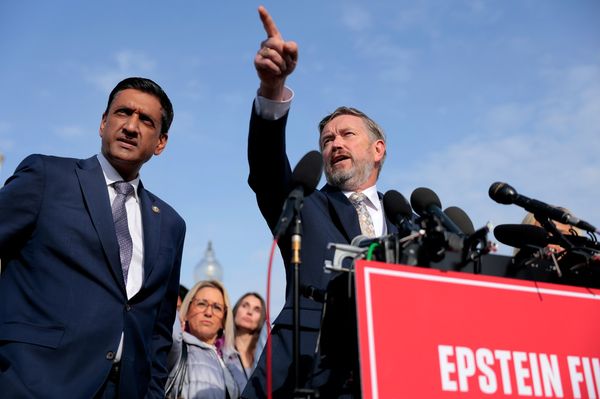
FIRE. These four letters have consumed the retirement planning discussion like, well, wildfire in recent years. They stand for financial independence, retire early — an approach that emphasizes intense budgeting, saving and investing to help practitioners reach retirement age well before they blow out the candles on their 65th birthday cake. Ideally, following this method could empower you to leave the workforce early — although some experts aren’t so sure.
For You: Here’s How Much You Need To Retire With a $100K Lifestyle
Learn About: 3 Advanced Investing Moves Experts Use To Minimize Taxes and Help Boost Returns
Like almost any other approach to retirement planning, FIRE has its advantages and its drawbacks. To explore what the movement gets right — and wrong — about retirement, GOBankingRates turned to several financial experts.
Where FIRE Blazes Brightly (What It Gets Right)
1. It Gets You To Think About Your Values
According to Stephan Shipe, a certified financial planner and founder and CEO of Scholar Advising, the FIRE movement gets a lot right — starting with the fact that it encourages you to save with purpose.
“It pushes people to think carefully about what they value and to save with purpose,” he said. “The discipline and awareness around spending are good habits no matter when you retire.”
2. It Helps Curb ‘Lifestyle Creep’
Michael LaCivita, a certified financial planner with Domain Money, agrees that FIRE’s emphasis on budgeting discipline, expense analysis and long-term planning is essential to achieving any financial goal — especially one as significant as retirement.
He’s also a big fan of how FIRE encourages wealth-building behaviors that guard against “lifestyle creep” as your wages increase over time.
“For lifestyle creep, the more you make, the more you’re likely to spend if you don’t follow a budget,” he said. “Each raise you receive ends up going to more luxuries or fun money rather than increasing your savings. Focusing on financial literacy and applying it to a household budget is huge.”
Read Next: Dave Ramsey Warns: This Common Habit Can Ruin Your Retirement
3. It Improves Personal Financial Literacy
As the co-founder and CEO of Retirable, a retirement planning company, Tyler End is very familiar with the FIRE method. One of his favorite aspects of the movement is how it encourages people to explore financial literacy for themselves.
“I would say one of the biggest benefits of the FIRE movement has been the increase in financial literacy as people explore the concept and apply some of the best practices, including savings, to their finances,” he said.
While there are obvious perks for those who have the singular goal of retiring early, End adds that applying some of FIRE’s principles can benefit anyone, helping them plan, budget and invest more wisely throughout their lives.
“I’ve seen clients who started down the FIRE path and, even after moderating their approach, maintained the financial awareness and decision-making skills they developed,” he said. “That’s incredibly valuable.”
Where FIRE Fizzles Out (What It Gets Wrong)
1. It Doesn’t Factor in Longevity — or Life Itself
End says the biggest downside he sees in adopting the FIRE mentality is that “life is short, and health is not guaranteed.” He’s worked with clients who spent their 20s and 30s embracing intense frugality, only to face health challenges or family situations that made them wish they’d taken more pleasure in those early years.
“Finding balance is far more sustainable than grinding yourself down for early retirement,” he said.
2. It Can Give You a False Sense of Security
Just because FIRE encourages a hard line on frugality doesn’t mean adherents aren’t vulnerable to underestimating their retirement expenses — and End is particularly concerned about followers underestimating healthcare costs before Medicare eligibility at age 65.
If you retire at 50, that could be more than a decade of out-of-pocket healthcare costs, which can derail even the best-laid plans.
Life can also change in other, more felicitous ways that FIRE doesn’t always fully account for.
“The biggest life change that we typically see is with people who started down the FIRE path and ultimately decided to have children,” End said. “With that decision, they have to shift priorities — and their finances follow suit.”
3. It Can Leave You Feeling Adrift During Actual Retirement
To LaCivita, one of the biggest misfires of the FIRE movement is how it can create tunnel vision — encouraging people to orient their entire lives around maximizing income and minimizing expenses, leaving them feeling aimless once they’ve reached their goal. His blunt assessment: “You have to build a life beyond the spreadsheet.”
Like End, he worries that clients who lean too far into the FIRE approach can miss out on unique experiences and time with loved ones for the sake of saving money. He’s also concerned that, in the singular fixation on saving for retirement, people fail to plan for what they actually want to do once they retire.
“In my experience, most retirees have not thought about what they will do with their time when work is not part of their routine,” he said.
How To Burn Brightly Without Burning Out
Recognizing that FIRE has both powerful strengths and notable weaknesses, these experts encourage a more balanced approach to retirement planning — one that prioritizes smart saving and investing while also allowing for greater flexibility.
Shipe encourages clients to start “test-driving” aspects of retirement early, such as scaling back hours or taking extended time off to see how it feels emotionally and financially.
LaCivita tells his clients that they don’t have to leave the workforce entirely to be successful with FIRE. Instead, they can recalibrate the principles to achieve other goals, like reducing hours or workload to spend more time with family.
“The principles of the FIRE movement — living below your means, investing consistently, being intentional with spending — are all great,” End said. “But you don’t have to take them to the extreme. I encourage clients to build financial security that gives you options and flexibility, but not to sacrifice your current life entirely for a future that may look different than you imagine.”
This article is part of GOBankingRates’ Top 100 Money Experts series, where we spotlight expert answers to the biggest financial questions Americans are asking. Have a question of your own? Share it on our hub — and you’ll be entered for a chance to win $500.
More From GoBankingRates
- Here's How Much You Need To Retire With a $100K Lifestyle
- Dave Ramsey Warns: This Common Habit Can Ruin Your Retirement
- Two Money Tools Smart People Swear By for Financial Emergencies
- How to Get Guaranteed Growth On Your Money -- Without Risking Your Principal
This article originally appeared on GOBankingRates.com: What the FIRE Movement Got Right — and Wrong — About Retirement







